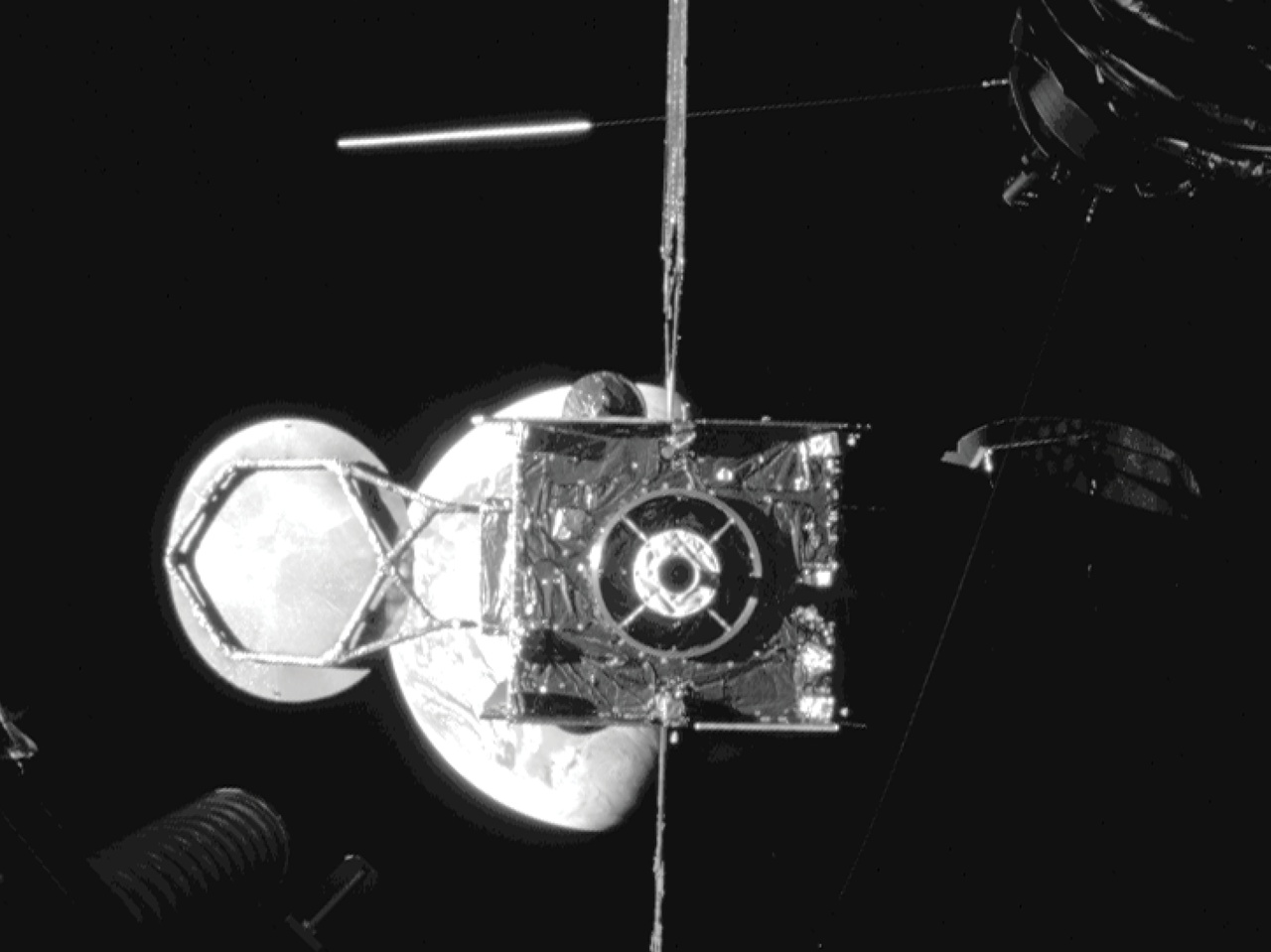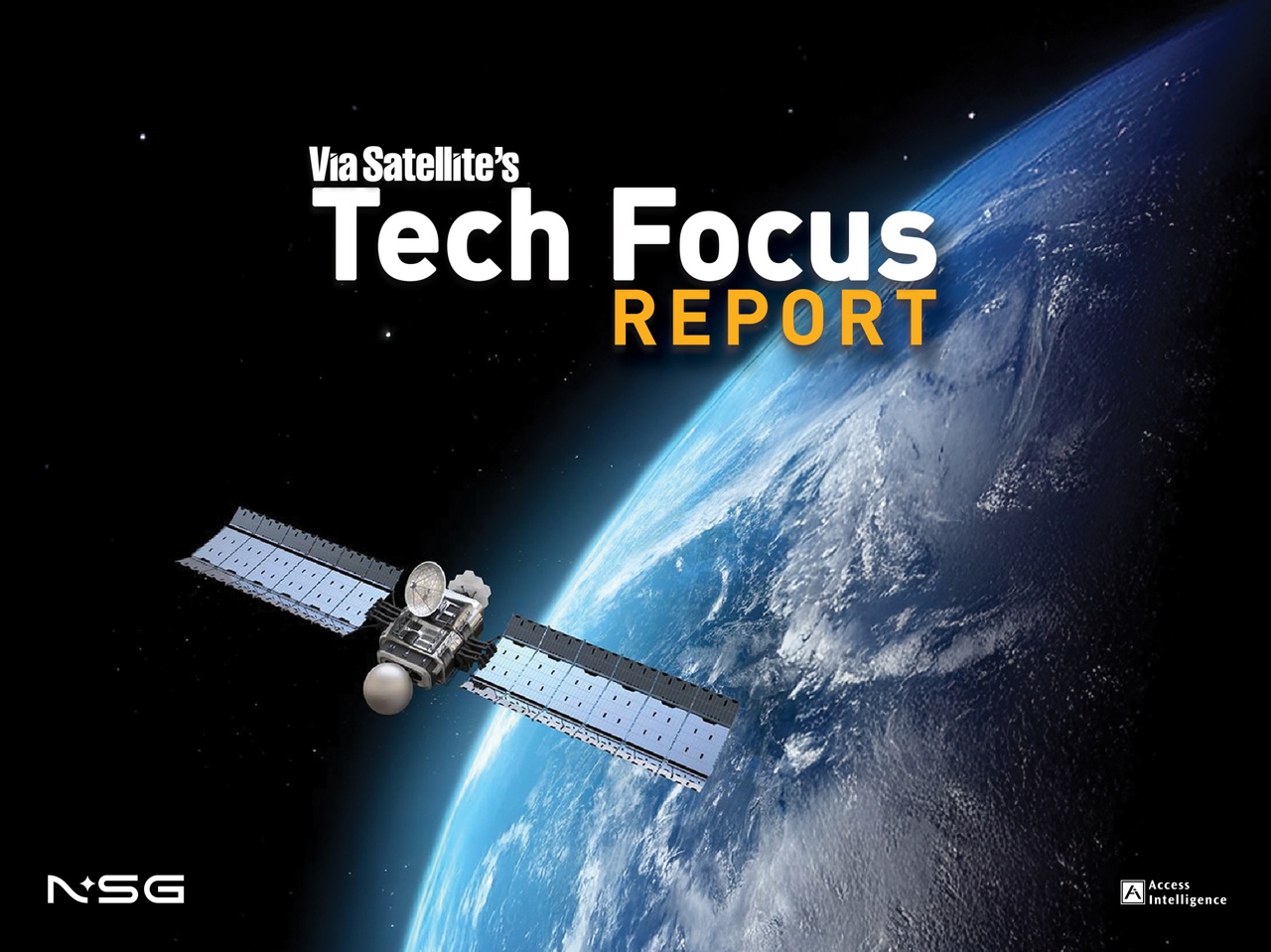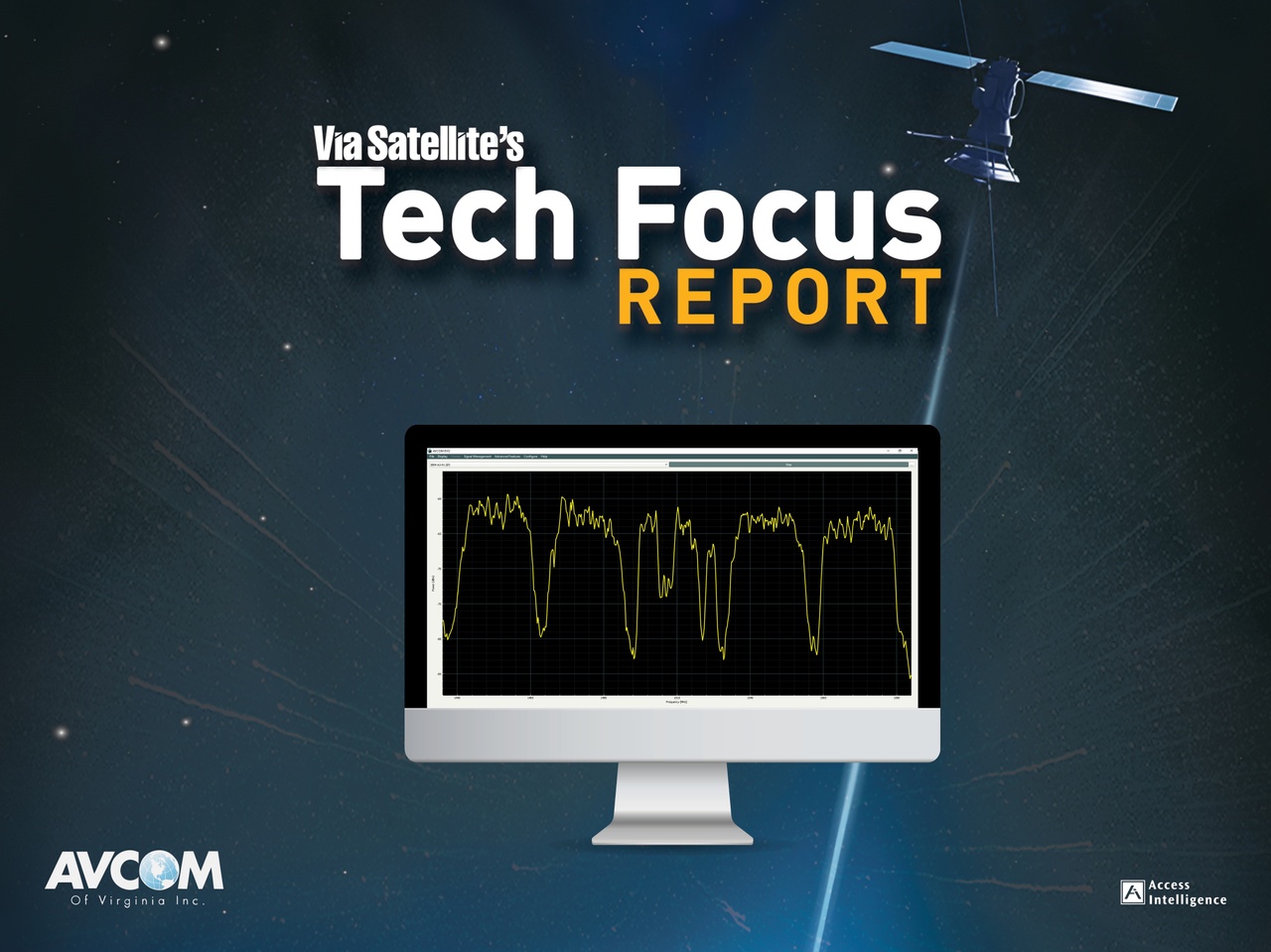
Global Influence: The Middle East is Rewriting What it Can Do in Space
Middle East nations are rapidly scaling their space ambitions with new strategic partnerships. August 25th, 2025New stars are rising as the global space economy evolves. At the forefront of the Middle East’s progressive rise are the United Arab Emirates (UAE) and Saudi Arabia, who have rapidly scaled their space ambitions. Both nations are pairing state-backed investment with strategic partnerships, a hybrid model that is effectively reshaping sovereign capabilities across satellites, human spaceflight, and deep-space exploration, says Pravin Pradeep, senior consultant of Aerospace and Defence at Frost & Sullivan.
Having nurtured their growing domestic talent, these Gulf nations are reinforcing their indigenous capabilities with government capital and global expertise to compete in high-value niches such as such as Earth Observation (EO), communications, and science missions, he says.
“The UAE and Saudi are not yet global space powers by traditional metrics, but their strategic intent, investment scale, and rapid capability build-up suggest they are emerging as influential global players in space,” says Pradeep. “They are undoubtedly rewriting what the Middle East can do in space.”
Neither nation has full-spectrum capabilities such as domestic launch systems or large-scale science infrastructure, yet both have rapidly built out end-to-end space capabilities from satellite design to operations, and both are closing the gap in targeting high-value niches, says Pradeep. While they rely on global providers for launches, Oman’s planned Etlaq Spaceport, expected to be operational by 2030, could offer regional access in the future, he adds.
But what makes a space power? Is it owning every step of the value chain, earning serious export revenues, or simply having strategic autonomy in orbit? Arjun Sreekumar, associate director of Aerospace, Defense and Space, Strategy and Operations at KPMG Middle East, shares a view to counter traditional metrics.
“I define a space power as a nation that secures a few critical capabilities — think precise navigation, resilient satellite communications, high‑quality EO — and can deliver them independently, while having diversified and derisked relationships to fill capability gaps. From that vantage point, the UAE and Saudi are well on their way,” says Sreekumar.
Both nations have shifted from being end users to owners and operators of advanced space assets. For example, the UAE’s Hope Probe to Mars in 2021 marked the Arab world’s first mission to another planet while its diverse satellite fleet provides imaging via KhalifaSat and Falcon Eye and communications via the Thuraya network and Al Yah spacecraft series. Saudi’s King Abdulaziz City for Science & Technology (KACST) developed the nation’s SaudiSat series for EO and technology demonstration, while joint ventures like SGS-1/HellasSat-4 with Lockheed Martin show cross-border collaboration.
Other landmark achievements involve the UAE’s long-duration astronaut missions and upcoming lunar and asteroid missions, in addition to Saudi’s 2023 mission that sent two astronauts to the ISS through Axiom Space, one of whom was the first Arab woman in space.
Sreekumar notes that neither country is trying to build every piece of the value chain from scratch, instead honing in on the parts that matter for autonomy, revenue, and local talent.
“They don’t have to build giant heavy‑lift rockets or the entire downstream ecosystem alone; smart partnerships can fill those gaps. What matters is that no single chokepoint can hold them back. Once they tick off core strategic boxes — secure PNT, space‑based surveillance, robust comms — they’ll have earned their place at the global table, even if their footprints look different from the traditional superpowers,” he says.
Public-Private Collaboration: Nation-Building by Design
While both nations’ programs sit on deep pools of patient capital, they spend it like entrepreneurs —quick wins first, such as small EO constellations and IoT links, then they step into more complex satellites once the ecosystem is ready, says Sreekumar.
“Private companies are the turbochargers of these space programs. Flagship ventures are fusing sovereign wealth funding with commercial speed to turn policy goals into satellites, data services, and export revenue in a fraction of the time a ministry could,” says Sreekumar. “Add in smart partnerships and a laser focus on niche applications, and you end up with players that can punch well above their weight,” he says.
In essence, government remains the anchor customer, derisking early contracts while giving companies freedom to chase regional and international markets. The result is a self-reinforcing ecosystem where state vision meets entrepreneurial hustle — exactly what the Gulf needs to leap from emerging actor to space heavyweight.
Unpacking this hybrid model, where ambition is backed by long-term institutional and commercial frameworks, yields fresh strategic partnerships to watch. The UAE’s 2024 formation of Space42, a merger between Abu Dhabi-based satellite operator Yahsat and AI-powered geospatial company Bayanat, signals a strategic push into AI-enabled space analytics and satellite services.
Orbitworks, the 2024 joint venture between Marlan Space and Loft Orbital operating in the UAE capital, is the nation’s first commercial mass-manufacturer of satellites, and is developing Altair, the UAE's first home-built, AI-enabled EO constellation.
Saudi’s Neo Space Group (NSG), founded in 2024 and seeded by the Public Investment Fund, is positioned not just as a buyer but as an anchor for joint manufacturing and tech-transfer programs. Focused on a services-first model, NSG aims to deliver an end-to-end commercial space portfolio spanning satellite manufacturing; EO data platforms; services in remote sensing, geospatial analysis and satellite navigation; broadband connectivity, in-flight connectivity (IFC), and future constellation deployment.
Space42
Focus on traditional applications has shifted as Space42 is targeting vertical integration, and regional and international geospatial applications in satcom, mobility, security and business intelligence. It is one of the world’s first companies to fully integrate satellite communications, geospatial analytics, and AI into a single platform. In January, Space42, in partnership with Iceye, deployed the second phase of the Foresight synthetic aperture radar (SAR) EO constellation, giving Space42 improved geospatial capabilities for disaster response, environmental monitoring, and security uses. In the same month, it launched Thuraya-4, one of the largest mobile satellite service (MSS) spacecrafts ever produced, strengthening sovereign communications infrastructure.
“We are also bringing advanced manufacturing to the UAE through new high altitude platform stations (HAPS) and EO facilities, building an entire domestic ecosystem for space-tech solutions,” says Hasan Al Hosani, CEO of Smart Solutions, the unit integrating Space42’s geospatial data acquisition and processing with its proprietary AI-driven multi-intelligence platform, GIQ.
“Beyond vertical integration with AI as a foundational capability, what further sets Space42 apart is the scalability of our business model. For instance, the Thuraya-4 satellite is designed to support more than 15 new satellite communications products across several domains. It is also the foundation of our direct-to-device (D2D) strategy, which aims to provide reliable satellite connectivity to billions of users and devices worldwide,” says Al Hosani.
This scalability also applies to the GIQ platform, which draws from more than 300 satellite feeds and integrates 50 internally developed AI models to support environmental resilience, disaster response, urban planning, and food security scenarios across civil, commercial, and defense domains.
Space42 is preparing for the commercial availability of Thuraya-4 later this year. The company is also working with Viasat for the development of a 5G non-terrestrial network (NTN) initiative.
Space42 is expanding its Foresight constellation with the planned launch of additional SAR satellites later this year. Two manufacturing facilities in Abu Dhabi will support EO capabilities: the Space42 Space Systems facility for SAR aircraft, and a HAPS development and testing facility.
“The UAE is setting the pace, and Space42 is helping to build the infrastructure, partnerships, and technological capabilities that will define the region’s leadership in the years ahead,” says Al Hosani.
Orbitworks
Completing the space infrastructure layer of the UAE ecosystem, Orbitworks is leveraging Loft Orbital’s heritage of designing, producing, deploying, and operating satellites for EO, communications, science and meteorology. The goal of the UAE’s first commercial entity to mass-manufacture satellites is the production of tens to up to 50 birds annually, including those of up to 500 kilograms. The company is preparing to launch Altair in 2026, an AI-enabled, multi-sensor EO constellation.
According to Orbitworks, its model gives it a competitive edge. The space market today relies on custom-designing satellites, ground architectures, launch arrangements, and satellite operations depending on the mission. Orbitworks relies instead on a robust, established architecture across the value chain that gives customers access to space-enabled capabilities in a simpler way.
“Customer demand for space capabilities is continuing to grow substantially as AI applications and declining access costs unlock new use cases. Yet, procuring space infrastructure remains extremely complex, burdensome and slow,” says Dr. Hamdullah Mohib, CEO of Marlan Space and acting CEO and executive director of Orbitworks.
“Our process moves from contract to launch in as little as a year’s time. Scalability of the model allows Orbitworks to offer cost-competitive proposals to customers, getting more capability for the same amount of investment. By leveraging a satellite-as-a-service model that encompasses launch and operation, customers can simplify and streamline their procurement and operational model, focusing on the mission,” says Mohib.
Orbitworks sees rapid growth in regional space activities over the next five years, driven by the increasing integration of AI across diverse use cases together with ambitious Gulf national visions and strong demand for distributed satellite architectures in both commercial and government missions.
“We are the ideal partner for customers seeking AI-enabled capabilities that are deployed rapidly, simply, and reliably. Additionally, Orbitworks is interacting with countless customers in the region and beyond that want to forge partnerships specifically because of our Emirati pedigree. The UAE is seen as a trusted, independent, reliable partner at a moment of geopolitical uncertainty and volatility. Orbitworks is uniquely positioned to be that trusted counterpart,” says Mohib.
NSG
NSG is building sovereign capabilities while expanding globally. It is investing in advanced R&D, both nurturing local talent and actively collaborating with global agencies, academia, and private sector players to accelerate capability development.
NSG provides multi-orbit, multi-frequency satellite capacity leasing for commercial and government clients. It has formed strategic partnerships with G&S SatCom for cloud-based real-time network monitoring, and Display Interactive and SES for IFC. Since, the company has secured international aviation contracts and will provide connectivity through the SES Open Orbits network. Additionally, it has made other strategic global alliances including that with Esri, a provider of Geographic Information Systems (GIS) mapping and location intelligence, and SuperMap Software to further enhance its GIS capabilities and technology offerings.
Through its geospatial division, recently strengthened by the acquisition of UP42 (formerly owned by Airbus Defence and Space), NSG offers EO data and analytics platforms, and remote sensing services for sectors such as agriculture, urban planning, infrastructure monitoring, and disaster management. It is also developing advanced Positioning, Navigation and Timing (PNT) solutions aimed at precise navigation across industries.
Additionally, NSG is establishing a global space-focused venture capital fund to invest in startups, accelerate technology localization within Saudi Arabia, and foster innovation within its space ecosystem.
NSG has leveraged strategic acquisitions to boost capabilities with key milestones including UP42 and the acquisition of TAQNIA ETS, a prominent local provider of geospatial services and solutions. The former gives NSG access to more than 130 EO data products on a single platform, making it easier to source and analyze diverse geospatial insights from multiple providers via a seamless interface.
“This acquisition marks a pivotal step in NSG’s strategic transformation, as the company evolves from a purely project-based model to an approach that combines both high-impact projects with scalable technology products that drive innovation, sustainability, and long-term growth,” says Martijn Blanken, CEO of NSG.
Another Gulf Strength: Es’hailSat
A significant regional player, Doha-based Es’hailSat has expanded significantly to transition from a government organization to a commercial space company. It operates two Geostationary Orbit (GEO) satellites and, with its new satellite program Es’hail-3, will be expanding its footprint beyond the Middle East and North Africa region to enter new markets with telecommunication services. Es’hailSat is working on developing EO opportunities, leveraging data analytics combined with satellite images, and sensor information to deliver actionable insights to local and regional entities.
It has grown its video neighborhood at the 25.5/26 degrees East hotspot and achieved Tier-4 certification for its teleport facility, able to carry traffic from anywhere and deliver it across its footprint, spanning southern Europe, the Middle East, and parts of Africa. Es’hailSat is further expanding its teleport facility to cater to growing demand for ground station services, including optical ground stations, ground station-as-a-service, and data downlinks for various satellite programs.
Es’hailSat has been nurturing strategic partnerships for several years, enabling it to expand its portfolio beyond traditional satellite services into areas such as playout and media services, and VSAT connectivity for energy and maritime markets. In order to extend its reach, Es’hailSat is working on partnering with Non-Geostationary Orbit (NGSO) constellations to enable global services.
Its ambitions to become a global space power are based on its strategy of collaboration with global partners, says Ali Al Kuwari, president and CEO of Es’hailSat.
“Today we are a multi-faceted organization with global partners, offering end-to-end services in sectors such as broadcasting, telecommunications, occasional use and mobile satellite services. Our strategic location, key partnerships and infrastructure, combined with our upcoming Es’hail-3 satellite program put us in a strong position to compete in the region,” says Al Kuwari. VS
Lead photo translation from Arabic: New Horizons in Space









